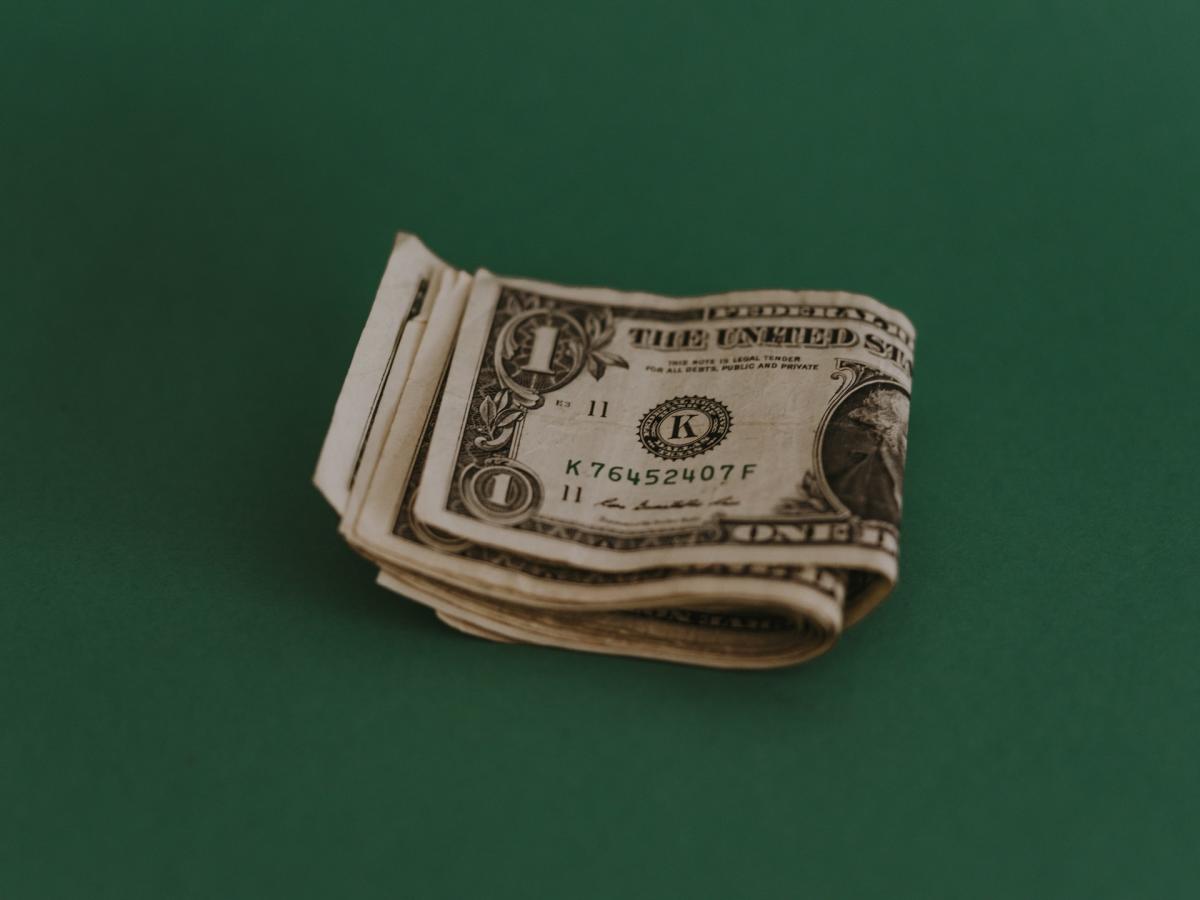Lifestyle
‘Birds Are My Eyesight’

On an average morning, Susan Glass can sit on the patio at her condominium complex in Saratoga, Calif., and identify as many as 15 different bird species by ear: a stellar’s jay, an acorn woodpecker, an oak titmouse.
For her, birding is more than a hobby. “Birds are my eyesight,” said Ms. Glass, a poet and a professor of English at West Valley Community College who has been blind since birth. “When I check into a hotel in Pittsburgh, I might remember the rock dove and the house finch in the parking lot, rather than the architecture.”
When the audio is played, captions appear that read “Drink your tea! Drink your tea! Drink your tea!”
Mnemonics are used by many birders to help identify bird calls. Some are more clear than others. The eastern towhee sounds like it’s saying “Drink yer teeeeea!” Audio via Michael Hurben
Ms. Glass, 67, was a child when she first noticed the birds twittering outside her family’s home on the Lake Erie coast of Michigan. “My mother told me they were a swallow called the purple martin,” she said. “I was paying attention to where they were flying, and I could actually start to hear the dimensions of our little cabin, the screen porch, the front yard.”
She has mapped her surroundings by bird song ever since.
Birding got a significant boost with the pandemic: With so many people doing less, they tuned in to the sounds of nature more; and with lockdowns came a reduction in noise pollution, which made the bird calls all the more pronounced.
Sarah Courchesne, a Massachusetts Audubon program ornithologist in Newburyport, attributes the increased interest in birding partly to the fact that it’s a way for people of all abilities to tap into nature — whether by eye, by ear or both.
As the birding community grows larger and more diverse, Ms. Courchesne said, birding clubs and conservation organizations are thinking more about accessibility, and this is changing the way they talk about birding and think about it.
For one thing, the terminology is evolving. According to Freya McGregor, a 35-year-old birder and occupational therapist specializing in blindness and low vision, the term “birder” was once reserved for those who were more serious than the hobbyist “bird watcher.” But increasingly, “birder” is becoming a catchall, thanks to a growing awareness that some hobbyists identify birds not by watching, but exclusively by listening.
Susan Glass, a poet and professor who has been blind since birth, has been mapping her surroundings by birdsong since childhood.
Jim Wilson/The New York Times
She sometimes uses a Braille Sense computer – or her phone – to record audio from birding trips.
Jim Wilson/The New York Times
Spaces are evolving too. Nature trails from Cape Cod to the Colombian Andes are being reimagined, with features like wheelchair-accessible terrain and guardrails to guide guests with low vision. The Audubon Society in Massachusetts recently introduced a series of All Person’s Trails, which are designed for accessibility.
Public programming is also expanding. Birding organizations across the country are introducing a new kind of bird “walk” — one called a “big sit,” where you just stay put. These stationary birding events, popularized by the New Haven Birding Club in the early 1990s, is a type of competitive event, sometimes hosted as a fund-raiser, in which teams of birders stay within their own 17-foot-diameter circles for a 24-hour period and identify as many birds as possible.
When the audio is played, captions appear that read “Cheer up, cheerily! Cheer up, cheerily”
Early ornithologists attempted to describe the rhythmic phrases of the American robin’s cheerful song with words like “Cheer up, cheerily.” Audio via Jerry Berrier
In May, Ms. Courchesne hosted a big sit alongside Jerry Berrier, a blind birder, on an All Person’s Trail near Ipswich, Mass. Mr. Berrier, who lives in Malden, Mass., said he wanted his event to be less competitive and more meditative than a traditional bird sit.
While some studies have shown that simply hearing bird song may alleviate anxiety and boost feelings of well-being, Mr. Berrier, 70, said the benefits go beyond that for him. “Birding gives me a connection with a world I can’t see,” he said, including when the world outside is waking up in the morning and winding down at dusk.
Jerry Berrier often goes into his backyard in Malden, Mass., with his parabolic microphone to listen to birds.
Kayana Szymczak for The New York Times
A microphone is situated underneath a bush outside of Mr. Berrier’s home.
Kayana Szymczak for The New York Times
He doesn’t even need to step outside to listen. Mr. Berrier’s home is surrounded by an audio mixer and sound recording equipment — parabolic microphones and devices he has custom-made — piping in bird sounds from the outdoors in real time, and recording bird song in quieter environments.
At the Ipswich bird sit, Mr. Berrier pointed people to the resonant song of an ovenbird; the buzzy trills of various warblers and the flutelike notes of a Baltimore oriole, which sometimes sounds like it’s saying: “Here; here; come right here, dear.”
When teaching newcomers how to distinguish birds by ear, Mr. Berrier often shares mnemonics. For the eastern towhee, he said, listen for a bird that tweets: “Drink yer teeeeea.” The American robin sounds like it’s singing, “Cheer up, cheerily.” The Northern cardinal might be saying, ‘Watch here, watch here.’” American goldfinches call “potato chip” in flight, while olive-sided flycatchers chirp, “Quick! Three beers!”
When the audio is played, captions appear that read “Here! Come right here! Here! Come right here, dear. Come right here!”
One of the mnemonic phrases that Mr. Berrier and other birders use to identify the the Baltimore oriole is “Here; here; come right here, dear.” Audio via Jerry Berrier
Mr. Berrier has been birding since the 1970s, when he was in college at the Indiana University of Pennsylvania. There, a professor gave him a special assignment to replace the dissection-based portion of his biology course.
“He ended up giving me probably one of the greatest gifts that’s ever been given to me by recommending that I listen to his record albums from Cornell University that had bird sounds on them,” Mr. Berrier said. “He said, ‘I want you to listen to these during the semester, and at the end, your lab portion of the grade is going to be based on a walk in the woods with me, and I will ask you to identify some of the sounds you hear.’”
At first, Mr. Berrier found it daunting to distinguish bird species in the wild just by their sounds. “I just thought, ‘Man, these birds all sound the same,’” he said. “But by the end of the semester, I was hooked, and I’ve been doing it ever since.”
During these early outings, Mr. Berrier identified cardinals, with their laserlike trills; robins with their cheery twittering; and red-winged blackbirds, whose call he still thinks of as “a harbinger of spring.”
When the audio is played, captions appear that read “Watch here! Watch here! Cheer, watch here! Cheer! Pretty, pretty, pretty, pretty.”
To some, the Northern cardinal sounds like it’s saying “pretty, pretty, pretty.” Audubon Vermont compares its call to a Star Wars light saber. Audio via Jerry Berrier
‘A Bird Heard’
For birders looking to build out their “life list” of every bird they’ve ever spotted, knowing these calls can be indispensable: The American Birding Association’s rules for identifying a bird species make no qualitative distinction between “a bird heard” and “a bird seen.”
Trevor Attenberg, a scientist and writer who is blind and lives in Portland, Ore., pointed out there are plenty of birds you have far less chance of seeing than hearing. “Something like 60 to 70 percent of the birds that you will encounter, you will only be able to encounter by ear,” Mr. Attenberg said.
“I’m always listening to what kind of birds I can hear in any given environment, whenever I step outside, and it tells me so much,” he said. “It tells me about the weather, and the seasons. It tells me about this specific landscape that I’m in. Even when I’m in urban environments, it can tell me about the quality of habitat.”
When the audio is played, captions appear that read “whip-poor-will whip-poor-will”
The Mexican whip-poor-will, which can be found in the southwestern U.S., has a call that sounds like its name. Audio via Michael Hurben
Learning the percentage of birds that one might only ever have a chance to identify by ear gave Mr. Attenberg, 40, more confidence. “It’s indicating to me — as the blind birder, uncertain as to my place in science — that I actually can compete with other ornithologists that can spot birds through binoculars and so forth, which I can’t really do,” he said. “Learning that, in fact, such a large share of possible bird detections are only going to come through the ear, tells me that, well, there is room for blind people — and people that just enjoy using their ears for listening or collecting information — to learn about birds in this way.”
But the notion of “a bird heard” is becoming increasingly imperiled as noise pollution brings about fundamental changes in the way nature sounds. Ornithologists have reported birds changing the tenor of their calls as they strain to be audible over the din of human-made noise — whether it’s crypto mining or just the everyday sounds of leaf blowers or car traffic.
When the audio is played, captions appear that repeat “Who cooks for you, who cooks for you?”
The barred owl seems to be asking, “Who cooks for you?” Audio via Michael Hurben
Ms. Glass, the poet in California, said she has noticed that, over time, there are fewer bird sounds altogether. “There is no longer, in my part of the world, what you would call a dawn chorus — an overwhelming bird chorus that drowns out everything else,” she said. Bird song ebbs and flows with the seasons, peaking during migrations. But studies indicate that as bird populations decline, bird song is declining, too.
Jerry Berrier often stands on his deck with his shotgun mic near sunset, and records bird sounds, which he later edits.
Kayana Szymczak for The New York Times
5,400 Birds
Michael Hurben, 56, is on a mission to document what he can, while he can. Because of a degenerative retina disease, his field of view has narrowed over time, from 180 degrees to, he estimates, less than one-tenth of that.
So Mr. Hurben, a retired engineer who lives in Bloomington, Minn., has doubled down on his love of birding, and is well on his way to identifying 5,400 different birds — a little more than half of all bird species in the world. “I just want to be able to say that I’ve identified the majority,” he said.
He and his wife, Claire Strohmeyer, who is also 56 and a clinical researcher, have visited dozens of international destinations to check rare species off the list. But a narrow scope makes searching for a bird in a tree, or spotting it through binoculars, especially challenging.
This makes his ability to identify birds by ear indispensable. He has brushed up on his skills online, but also by birding with other birders by ear, including Mr. Berrier, who joined Mr. Hurben on a birding trip to Cape May, N.J., last year.
Mr. Hurben finds it increasingly difficult to hear certain bird song, like the very high-pitched calls of the colorful cedar waxwing.
“Before we go on a trip, I will try to really study the calls ahead of time,” he said. While some calls do require a mnemonic to remember, others are very distinctive.
When the audio is played, no mnemonic captions appear
The screaming piha has a call so unique it’s a go-to for sound designers when making films set in jungles, said Michael Hurben, a birder. He recorded this sound clip on a birding trip to Brazil. Audio via Michael Hurben
He cited for example, the screaming piha, a plain-looking gray bird he and his wife trekked into the Amazon to identify. Its unique call is a go-to for sound designers when making films set in jungles, he said. (Listen for it in Werner Herzog’s 1972 film, “Aguirre, Wrath of God.”) Likewise, another South American bird, the sharpbill, has a call that sounds “like a falling bomb,” Mr. Hurben said. “I hear that song once, and I’ll never forget it the rest of my life.”

Lifestyle
The cancer quietly killing young people : It's Been a Minute

Why aren’t we talking about colorectal cancer?
Getty Images
hide caption
toggle caption
Getty Images
If more and more young people are dying of colorectal cancer, why aren’t we talking about it? Is it because we’re too ashamed of our bodies?
Rates of colorectal cancer are rising, especially for people under 50. But it’s hard to raise awareness for a cancer that a lot of us find hard to talk about. In a recent essay for The Cut, writer Laurie Abraham described her experience of colon cancer, which included a lot of embarrassment. Talking about your bowel movements is…not fun. Can you relate?
Today, Brittany is joined by Laurie and Dr. Kimmie Ng, Co-Director of the Colon and Rectal Cancer Center at the Dana-Farber Cancer Institute, to get into the cultural shame around how we talk about colon cancer – and how that extends to a lack of funding and research.
Follow Brittany Luse on Instagram: @bmluse
For handpicked podcast recommendations every week, subscribe to NPR’s Pod Club newsletter at npr.org/podclub.
This episode was produced by Corey Antonio Rose and Liam McBain. It was edited by Neena Pathak. Engineering support came from Becky Brown. Our Supervising Producer is Barton Girdwood. Our Executive Producer is Veralyn Williams. Our VP of Programming is Yolanda Sangweni.
Lifestyle
How one man in East L.A. ended up with the world's most famous feet

In an overstuffed workshop in East L.A., Chris Francis reached out a heavily tattooed arm and pulled a single shoe box from one of the floor-to-ceiling shelves lining the walls.
“Anjelica Huston,” the shoemaker and artist said. “Let’s see what’s in here.”
Removing the top of the box, he revealed two carved wooden forms known as shoe lasts that cobblers use to make their wares. Beneath those were strips of yellowing shoe patterns and a tracing of the actor’s foot with a note written in loopy cursive:
To Pasquale
My happy feet shall thank you
— Anjelica Huston
The Di Fabrizio collection includes shoe measurements for stars like Nancy Sinatra, Kim Novak, Joe Pesci and Madeline Kahn, all adorned with green, white and red striped ribbon.
(Allen J. Schaben / Los Angeles Times)
“Cool, huh?” Francis said, gazing reverently at the box’s contents. “Every time I open one it’s amazing. It’s like Christmas all the time.”
-
Share via
For the last three years, Francis has been surrounded by a sprawling archive of famous feet originally amassed by Pasquale Di Fabrizio, the late shoemaker to the stars. From the early ‘60s to the early 2000s, Di Fabrizio created custom footwear for the rich, famous and notorious out of his humble shoe shop on 3rd Street.
The shoes went to his customers, but his voluminous collection includes shoe lasts, patterns, drawings, correspondences, leather samples and handwritten notes from thousands of clients, all stored in cardboard shoe boxes that the Italian immigrant trimmed with green, white and red striped ribbon.
The names, written in bold Magic Marker on the front of each box are a who’s who of entertainers from the ‘60s, ‘70s, ‘80s and beyond: Liza Minnelli, Tom Jones, Richard Pryor, Robert De Niro, Sarah Jessica Parker, Bea Arthur, Arsenio Hall, Nancy Sinatra, Ace Frehley. The list goes on and on.

Francis found foot measurements, wooden shoe lasts and a shoe in progress that Pasquale Di Fabrizio made for Ginger Rogers in a box marked with her name.
(Allen J. Schaben / Los Angeles Times)

“Shoe Machine” is one of Chris Francis’ art pieces that he has shown at museums.
(Allen J. Schaben / Los Angeles Times)
“So many great people stood on these pieces of paper,” Francis said, looking at the stacks of boxes around him. “Roy Orbison. Eva Gabor. Stella Stevens. Lauren Bacall. I could pull these down all day.”
Francis never met Di Fabrizio, who died in 2008, but in 2022 he traded two pairs of his sculptural shoe-art pieces to Di Fabrizio’s friend and fellow shoemaker Gary Kazanchyan for the entirety of the Italian shoemaker’s archive. Three years later, Francis is still making his way through it all.
The amount of material is overwhelming, but he is committed to preserving Di Fabrizio’s legacy. Ultimately, he wants to find a space where he can share it with others.
“I never want to be without it, but I’m realistic that it deserves to be appreciated by more than just myself,” he said. “If my life’s work ended up in somebody’s hands, I don’t think I’d want them to just keep it for themselves forever.”
A shoemaker’s journey
Francis isn’t just cataloging L.A.’s shoemaking history, he’s helping to keep it alive.
Over the last decade and a half he’s made a name for himself as a custom shoemaker, creating handmade bespoke footwear for rockers like former Runaways guitarist Lita Ford and Steve Jones of the Sex Pistols, as well as sculptural art shoes that are displayed in museums like the Craft Contemporary, the Palm Springs Art Museum and SCAD FASH in Atlanta.

Wooden shoe lasts hang from the ceiling as Chris Francis works on a shoe for the singer Lita Ford in his garage.
(Christina House / Los Angeles Times)
In his East L.A. workshop, he eschews modern technology, focusing instead on traditional methods of shoemaking, often with hand tools.
“The handmade shoe is alive and well in this shop,” he said, dressed in pressed black slacks and tinted sunglasses, chunky gold rings gleaming on his fingers. “There’s no computer here, and even the records half the time are vinyls or 78s.”
Making shoes by hand is time-consuming and expensive work — Francis doesn’t sell a pair of shoes for less than $1,800 — but for his mostly musician clientele, a sturdy, custom-made, comfortable shoe that also boasts over-the-top style is well worth the price.
“At my price point, my customers are buying something that’s really a tool,” he said. “It’s part of their look, but it also has to hit 27 guitar pedals, keep all of its crystal, be beautiful, last multiple tours and they have to be able to stand in it all night.”
Francis, who has a certain aging-rocker swagger himself, never expected to become a shoemaker.
After going to art school and hopping freight trains for several years, he moved to Los Angeles in 2002 originally to join the Merchant Marines. Instead he found work hanging multi-story graphics and billboards on the side of hotels and high-rises on the Sunset Strip and at casinos in Las Vegas. “That gave me the same thrill of riding a freight train,” he said. “Being on a high-rise building and rappelling down.”

Francis found fabric samples and designs for shoes that Pasquale Di Fabrizio made for a Broadway production of the musical “Marilyn: An American Fable.”
(Allen J. Schaben / Los Angeles Times)

Shoemaker and artist Chris Francis makes shoes the traditional way in his workshop in East Los Angeles.
(Allen J. Schaben / Los Angeles Times)
He discovered he had a knack for pattern making in 2008 when he began creating hand-stitched leather jackets to wear to the Hollywood parties he had started attending with his now-fiancee. One day a stranger approached him and said she knew someone who would appreciate a jacket like the ones he was making. She was a stylist for Arnel Pineda, the lead singer of Journey. Commissions from Mötley Crüe and other rock bands followed.
A few years later he became interested in making shoes, but although he knocked on the door of several shoe shops in town, he couldn’t find a mentor.
“They didn’t have time, or they’d say, ‘You belong in a rock and roll band, you’re not one of us,’” he said. “But I would say, ‘Just teach me one thing, one trick.’ And everyone had time to teach one trick.”
It was an education in much more than shoemaking.
“Almost every shoemaker I met had immigrated to the country,” he said. “So I learned how to make shoes from the Italians, from guys from Armenia, Iran, Iraq, Russia, Syria, from everybody. And while doing so, I learned about all these different cultures.”
‘He was the king’
As Francis dove deeper into the history of shoemaking in Los Angeles, one name kept coming up again and again: Pasquale Di Fabrizio.

The late Pasquale Di Fabrizio, a cobbler to the Hollywood elite, photographed in front of his collection of shoe lasts, circa 1982.
(Bret Lundberg / Images Press / Getty Images)
“I started asking other makers about him, and they were like, ‘Oh yeah, we remember him,’” Francis said. “He was the king.”
For more than 50 years Di Fabrizio was the most sought after shoemaker in Los Angeles. He made Liberace’s rhinestone-encrusted footwear and shod Mickey Mouse, Goofy and Donald Duck for touring productions of Disney on Parade. He was the go-to shoemaker for country western stars, Vegas showgirls, Hollywood movie stars, gospel singers and casino owners. The Rat Pack helped put him on the map.
“My best customer is Dean Martin,” Di Fabrizio told The Times in 1972. “He buys 40 pairs a year.”
Sporting a thick, bristled mustache and oversize glasses, Di Fabrizio had a tough reputation. He once kicked a movie star out of his shop because the star brought back a pair of patent leather shoes that he claimed were defective. Di Fabrizio accused him of missing the urinal and peeing on them at the Oscars.
“Never come back here again,” he said in his thick Italian accent.
The shoemaker occasionally made house calls, but his customers mostly came to him. In his workshop on 3rd Street near Crescent Heights, he would trace their bare feet on a piece of paper and measure the circumference of each of their feet at the ball, around the arch, the heel and the ankle. Then he would customize a pre-carved wooden last from Italy, adding thin pieces of leather 1 millimeter at a time to more perfectly mimic the unique shape of the client’s foot.
The size and shapes of the lasts varied wildly. He once told a reporter that it took “half a cow” to make shoes for Wilt Chamberlain, who wore a size 15. In his archives, Francis found a petite high heel shoe last roughly the length of his hand.

Francis holds a foot tracing and shoe lasts made for Robert De Niro by Pasquale Di Fabrizio.
(Allen J. Schaben / Los Angeles Times)
“Di Fabrizio did lots of shoes for little people,” Francis said. “He really offered an important service for that community. They could have formal footwear rather than having only the option of wearing kids shoes.”
The same lasts could be used over and over again to make several pairs of shoes, as long as the heel height was the same. Each last went in its own box decorated with a ribbon in the colors of the Italian flag.
“It’s so simple, but he claims his territory with that ribbon,” Francis said. “He cared enough to take one extra step. It’s what really made that collection iconic.”
A legacy preserved
Francis first encountered Di Fabrizio’s archives in 2010 when Kazanchyan offered him a job at Andre #1 Custom Made Shoes on Sunset Boulevard. Kazanchyan inherited the shop from his uncle, Andre Kazanchyan, who once worked with Di Fabrizio and became his good friend.
Gary Kazanchyan and Di Fabrizio were close as well. When Di Fabrizio retired in the early 2000s, Kazanchyan hired all of the guys who worked at his shop. Di Fabrizio was at Kazanchyan’s wedding and when the older shoemaker was in a nursing home at the end of his life, Kazanchyan visited him every day.
For years Kazanchyan stored as many of the ribbon-trimmed boxes as he could fit in his Hollywood shop, but just before COVID he moved his shop to his garage in Burbank and transferred Di Fabrizio’s archives to his backyard. “At one point, my whole backyard was this mountain of shoe lasts,” he said.

Chris Francis, left, and Gary Kazanchyan at Palermo’s Italian Restaurant in Los Feliz.
(Deborah Netburn / Los Angeles Times)
Kazanchyan started a renovation on his house in 2022 and could no longer store Di Fabrizio’s archive in his backyard. He’d sold some of the most famous shoe lasts at auction — a bundle of Di Fabrizio’s shoe lasts for Frank Sinatra, Dean Martin and Sammy Davis Jr. went for $4,375 in 2013 — but he still had several tons of material stacked on pallets and covered in tarps. He remembered that Francis loved the collection, so he called him and asked if he wanted it. Francis did.
Francis didn’t have the money to purchase the collection in cash, but he offered Kazanchyan two art pieces that he’d exhibited and Kazanchyan accepted. The first carload of boxes Francis took to his studio included lasts for Wayne Newton, Paula Abdul, Ginger Rogers, Burt Reynolds and Sylvester Stallone.
“My excitement was on fire,” he said.
Francis spent a few weeks sorting through the archive and discarding lasts and shoe boxes that were too covered in mold or deteriorated to be worth keeping. Just before a rainstorm threatened the rest of the collection, he brought thousands of shoe lasts to his studio but even now regrets that he was unable to save it all.
“I tried to grab the big names, but there was so much I couldn’t keep,” he said. “It was heartbreaking.”
The boxes hold stories — and life lessons
Living and working among the Di Fabrizio collection has taught Francis a lot more than just the art of making shoes.
“I’m constantly seeing the obituary of a celebrity who has passed and I go to the workshop and there’s their box,” he said. “It really lets you know that life is for the living. It’s up to you to be responsible and live your life when you’re alive. Be yourself, teach others, leave something behind.”
Hanging onto the collection has not been easy — but Francis believes he was chosen from beyond to care for Di Fabrizio’s archive and to share it with others responsibly.
He’s still not sure what that will look like, but he’s determined to try.
And in the meantime, he is also determined to keep the traditional art of shoemaking alive in Los Angeles.
If you look around his workshop, you’ll spot several boxes adorned with red, white and blue striped ribbon.
Francis is making those boxes his own.

Working with hand tools, Chris Francis makes a custom pair of shoes for musician Lita Ford.
(Christina House / Los Angeles Times)
Lifestyle
Bobbi Brown doesn’t listen to men in suits about makeup : Wild Card with Rachel Martin

A note from Wild Card host Rachel Martin: Bobbi Brown’s massively successful career started because of two words, “Why not?” Why not cold call a bunch of famous make up artists to get her first job in the industry? Why not make her own make up? Why not go into business with a global cosmetics brand, then break up with them decades later? Why not start over in her sixties, launch a new company and become a TikTok star in the process?
When Bobbi Brown asks “Why not?” it’s like she’s daring someone to answer. Daring someone to curb her ambition or thwart her dreams. Which is impossible since she has already made up her mind to go for it.















